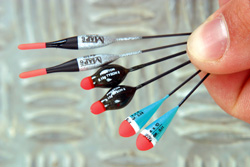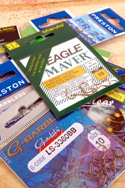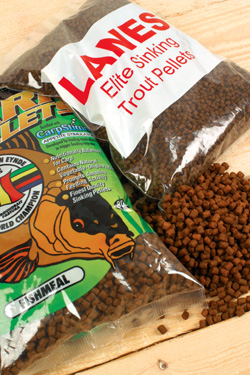A look at hook pellets and how to fish this bait to maximum effect and win.
IT’S all well and good buying the right pellets from the shop, but presenting them correctly is what’s really going to catch you fish.
It is a deadly bait fished at all depths and there are a few tricks that’ll help you to be even better at it on the bank.
There are several different manufacturers supplying ready-prepared soft hooker pellets and these are designed to take the confusion out of doing them yourself and to save time. Besides, why spend an hour preparing some hooker pellets when you can simply go into a shop and buy some straight off the shelf?
Well, doing them yourself allows you to get the exact texture you require and you can control how you prepare them and what flavours to add, if any. But there’s no doubt some ready-prepared ones are better than many anglers could do themselves and they’re also great for first-time pellet anglers who don’t know the first thing about preparing their own, but want to get into the game.
Among the best we’ve come across are Van den Eynde Juicy pellets and those from the Sensas Crazy Bait range. However, there are many others out there that’ll perform the job admirably.
Some are quite hard, while others are very spongy and it’s simply a case of choosing which ones best suit you and your style of fishing.
A good ready-prepared pellet is one that’s soft and spongy, yet if you use it on the waggler or feeder it’ll withstand a powerful cast. Ideally, you want to be fishing the same pellets on the hook as the ones your feeding, but this isn’t always possible simply because many fisheries ban all pellets other than hookers and their own-brand feed pellets. Ready-prepared pellets are great for keeping in your bag for those ‘just in case’ times and it’s also a good idea to take a few different flavours with you to cover your options.
Ready-prepared pellets are not really for feeding and while it may be a good idea to include a few hook bait samples (where rules allow), dedicated sinking pellets are all you really need to feed. As most prepared pellets cost between £2 and £3 per tub, you’re in for an expensive day’s fishing if you feed them as well.
 |
Storage Of Ready-Prepared Pellets
Once you’ve opened a tub of ready-prepared pellets, storing them is a key part if you’re to make them last. Most pellets, certainly the best ones, come in a resealable tub and, once you’ve taken a pellet out to hook, the best idea is to seal it back up and keep it in a cool place when you’re on the bank.
Bacteria is what deteriorates pellets. You’ll notice the pellets will split far easier if you let bacteria get onto the bait, so that’s the reason for keeping them airtight and cool. Some people even say that particular brands of pellets are better after they’ve been around for a while as they get more spongy as the liquid is absorbed further into the pellet.
A fridge is the best place to store them once you’re at home and you can even freeze them to keep them in tip-top condition.
 |
Shallow Rigs
Pellets are a great bait for fishing shallow as they make a lot of noise, so are great for attracting carp to the surface layers of the water.
Rigs for fishing up in the water are always best kept simple and pellet fishing is no exception. A short, carbon-stemmed float is ideal in most circumstances and it’s best shotted with as little shot as possible. Shallow rigs can be very tangle-prone, so make sure you always use simple rigs.
However, just because you’re fishing ‘shallow’, it doesn’t mean you have to fish in the top two feet of water: no, no, you can fish at half-depth or even deeper – it’s just a case of finding out where the fish are feeding.
You’ll need a slightly bigger, more stable float for fishing deeper and, once you start to fish more than around three-feet deep, rigs are best shotted with a small bulk rather than a strung-out pattern. Small 4×10 or 4×12 floats are ideal and slim designs are best for calm water, while a float with a bit more body is ideal for fishing a bit deeper or in a wind.
Match Fishing has suggested a couple of shallow pellet rigs to get you started.
Deep Rigs
You’ll usually need to cover your options where pellet fishing is concerned, so making sure you’ve got a couple of different full-depth rigs ready is an essential step to success.
Rigs are best kept simple once again, with a bulk and a couple of droppers the best option. Droppers are important to take any ‘bounce’ out of the rig if it’s a windy day, while a bulk allows you to get the hook bait down to the feed quickly.
As pellets are quite a heavy bait and sink quickly, as opposed to meat or maggots, they’re the ideal bait for keeping fish on the bottom when you feed on a big and not very often basis. A rig with a strung-out pattern can be useful for fishing on the drop through the last third of water, especially if there are a lot of fish in the swim. This is because carp will sometimes sit off the bottom over the feed on many occasions and a slow-falling bait can be the ideal way to catch them, especially when used in conjunction with slow-sinking expander hook pellets.
As for what size floats to use, it all depends on the depth of the venue you’re fishing and how badly the wind or tow is affecting the water.
The best idea is to stick to the floats you’re used to, but make sure they’re a typical stillwater pattern like a body-down or round design to achieve maximum stability and presentation.
 |
| You need a round bend hook when pellet fishing. |
Hook Patterns
Hook choice is a very personal thing and above all you must stick to the patterns you’re most confident with. However, there’s no doubt that a round bend is a lot better than any other out there. Round bended hooks allow you to actually ‘roll’ the bait onto the hook, so you can totally conceal the hook with very little fuss. Round-bend hooks also hold the bait on much better, so are great when you’re using very soft pellets or for when you have to cast the bait on a running line. Among the best patterns around are Preston PR24’s, Preston Pr28’s, Maver Eagles, Kamasan B911’s, Mustad Stillwater Power’s or any other patterns with a round bend. Another important aspect of the hook is that it must be strong as you’ll usually be looking to catch hard-fighting fish.
However, all that said, a crystal-bend hook can have advantages on some occasions, particularly where the fish get fished for a lot. A crystal-bend hook allows you to just nick the bait like a maggot and get a way with a much smaller hook than you’d otherwise use and can be a great ploy for targeting wary fish.
The great thing about pellets is that once prepared they’ll float, so once you hook them, squeezing them under the water to release air is a deadly trick as you can make the pellet perform in the water exactly as you require. You can actually neutralise the weight of the hook by doing this.
The size hook you should use very much depends on the make, as they vary considerably, but for a 4mm pre-prepared pellet a size 18 to 14 is about right and for a bigger 6mm one you can get away with a 12. The key point to ensure is that you conceal the hook completely to trick wary fish into taking the bait.
Grand Band
Banding pellets is a great ploy when you’re catching quickly and there are now loads of pellet bands and band aids out there to make the job even simpler. Although banded pellets are great for waggler fishing, they lend themselves particularly well to shallow fishing where you’re likely to get a lot of false indications and have to keep lifting and dropping the rig. Also, a banded pellet allows you to leave nearly all the hook showing, increasing hooking potential. Hard, banded pellets replicate what you’re feeding anyway, so you’ll get more bites by using a banded bait when you’re fishing shallow.
|
|
||||
|
|
While soft hooker pellets are good for fishing on the deck, you’ll spend most of your time shipping in and out if you use one for shallow fishing.
Placing a small band around a tiny pellet can be a very tedious job, but now there are many different pellet-banding tools available. All you have to do is simply place the hard pellet in the allocated slot and slide the band up the bander and over the pellet – as easy as that.
Feeding
As far as what pellets to feed when you’re using pre-prepared pellets, it all depends on the size of fish you’re targeting. The best ploy is to firstly make sure you feed the same flavour and a similar size pellet to that you’re using on the hook.
Many manufacturers make feed pellets to complement the hook bait and it’s those you want to stick to if you’re to be successful. A soaked, 4mm feed pellet will expand considerably if you leave it in water for around 10 minutes, so the feed pellets can be made to look like the hook bait with relative ease and that’s a very important point.
Many anglers also make the mistake of feeding too much bait but, as pellets are generally a small bait, you’re feeding a lot of individual pellets, even in a small handful. Just because you feed a ball of groundbait the size of an orange and catch, you shouldn’t feed that many pellets as you’ll either blow your swim from the off or you’ll get so many fish there that you’ll foul hook more than you hook in the mouth. Of course, this all depends on the venue, but a little-and-often feed approach is nearly always best.










